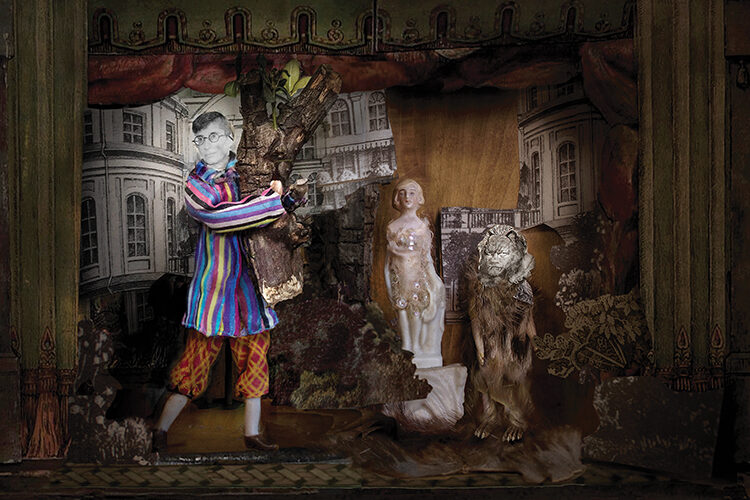Twenty years ago, Suzi Tucker ’84 was an expert in theoretical physical chemistry, spending her days researching solute dynamics in fluids and teaching the next generation of chemists at the University of California, Davis. But once she reached the top of her field and began looking at what to do next, she felt stuck: “I had pulled a stack of books like 20 books high for the next field I was going to move to [unique properties of fluids near the critical point],” she recalls. “But when you’re at that level, it’s a big thing to move even subfields away. And I realized I didn’t care that much. I actually didn’t want to read all those books.”
Thinking back to her childhood, Tucker tapped into an area that always excited her — art. Now, she spends her days creating theatrical sets in Seattle, Wash. She says, really, it’s not that far off from her chemistry career. “It’s visualization and problem solving. That’s what I do. It just has less math.” Follow her path:
As a kid, spend hours buzzing through math puzzle books. When you get bored with numbers, trade them for crafts and art projects. Maybe read a book, or 30.
Once you’re in high school, discover the joys of advanced painting, but don’t drop those higher-level math and science classes — you’ll need them later.
At Colgate, major in chemistry, and become fascinated with quantum mechanics and all of those elements. When you leave the lab, trudge through the snow to your favorite course: an independent study in printmaking with Professor Lynn Schwarzer.
Spend a summer working in General Electric’s research and development department, learning what you can do with a bachelor’s degree versus a PhD in chemistry. Directing research piques your interest — when you graduate, head for the University of Minnesota, where you’ll begin to explore theoretical chemistry. Then, complete a postdoc at Columbia University.
Get a job at UC Davis, diving into the research you crave. Make your name in supercritical fluids. “Those are if you take something like water, and you make it really hot, but then you compress it at the same time, you can actually go continuously from really high, liquid-like densities down to those of a gas without going through boiling.” You’ll understand, I promise. In fact, you’ll make full professor and become an expert.
But… “being an expert is boring.” Decide to make a change. Go to a career counselor, who will help you understand that you miss that artistic creativity you loved so much in adolescence. Dip a toe in by taking design classes, which are offered across the street from your chemistry building. Complete an internship at the Franklin Institute Science Museum, designing an exhibit, and realize your science and art brains can work in harmony.
Take a job at an exhibit design firm in Seattle. Then, leave to work with the Institute for Complex Adaptive Matter, with funding from the National Science Foundation, to produce an online, interactive science exhibit for young adults, exploring topics from superconductivity to Alzheimer’s disease.
Realize your need to be around people, not sitting in front of a computer all day. Volunteer with a local fringe theater and learn the foundations of set building. Intern at a local scene shop, where you’ll learn the basics of scenic painting and “how to use a whole ton of power tools.” Begin honing your craft, designing and building sets on your own for small-scale productions. Once you get your footing, think bigger.
As a full-fledged set designer, visualize and create the scenery for numerous plays, including a local production of Beauty and the Beast (brace yourself for 32 set changes).
You can’t leave science behind entirely, so when you’re not bringing theater to life, tutor high school students in math and science. After all, that’s where you started.

